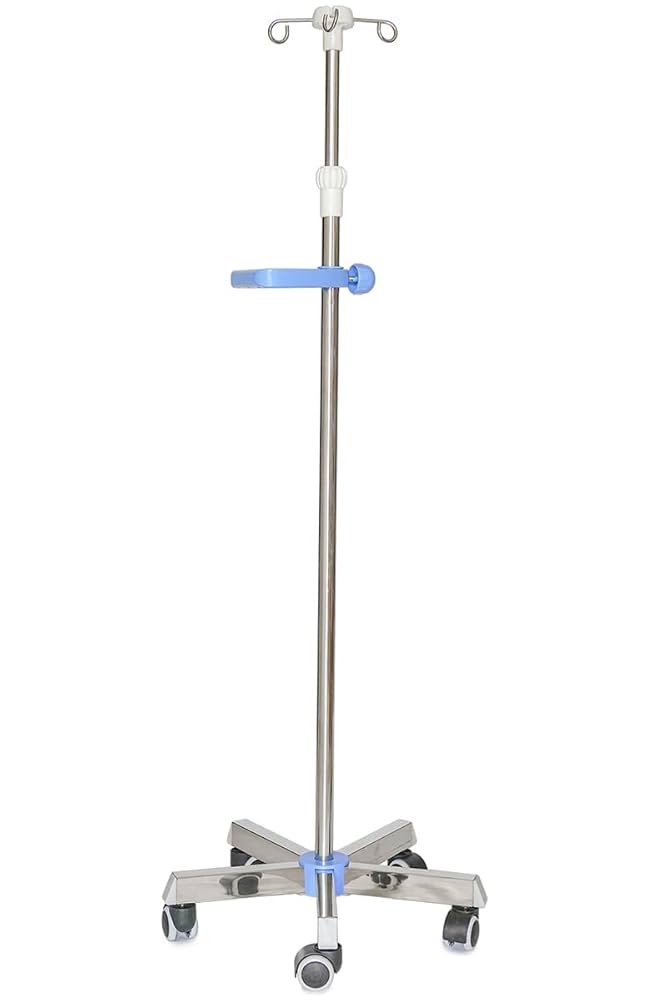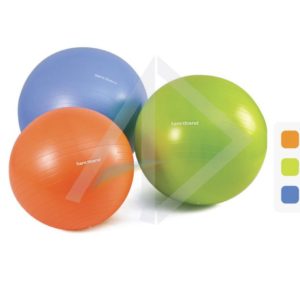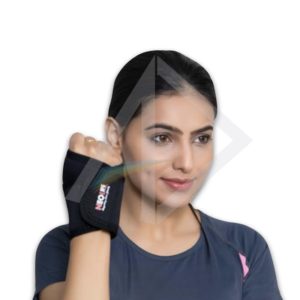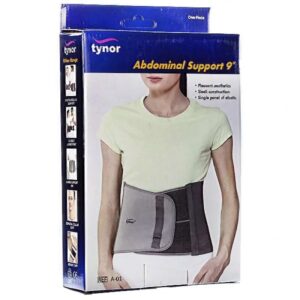Adjustable stainless Drip Stand
Sh 150,000
- Durable stainless-steel adjustable IV stand with 4 hooks.
- Provides stable support for IV fluids and blood transfusions.
- Ideal for hospitals, clinics, and home care environments.
Adjustable Stainless Steel Drip Stand (4-hook, height adjustable)
A drip stand (also called IV stand or infusion stand) is a medical device designed to hold and support intravenous (IV) fluid bags, medication bags, or blood transfusions safely at an appropriate height during patient treatment, enabling mobility and ease of care. It is particularly relevant in Tanzania where facilities may require durable, rust-resistant equipment that can be moved across wards or shared among clinics.
Available Models/Sizes/Variations
- Height adjustable versions: approx. 110 cm – 190 cm or 120 – 200 cm height range.
- Hook count: typically 2-4 stainless steel hooks for hanging multiple IV bags or bottles.
- Base options: five-leg base with castors (wheels) for mobility; some models include brakes.
- Material: mainly stainless steel construction, often with anti-rust or electroplated finish.
Main Intended Uses (with localized benefits)
- For intravenous fluid therapy or medication drip administration in hospitals and clinics in Tanzania.
- For blood transfusions safely hanging blood bags during surgery or emergencies.
- Home-based care for patients who need IV fluids, improves accessibility for those unable to be in hospital long-term.
- Useful in resource-limited settings due to its durable materials and relatively simple maintenance.
Operating Instructions (Itemized with setup/operation/maintenance)
- Unpack and assemble the stand, ensuring hooks and legs are securely fastened.
- Set the height using the adjustable pole mechanism; tighten locking knob or screw to secure height.
- Attach IV bag(s) to the hooks; ensure load does not exceed capacity. Typically total load ~10-15 kg.
- Move the stand by its castors; lock brakes (if equipped) when stationary.
- After use, clean with mild disinfectant, dry thoroughly to prevent corrosion. Inspect for wear (hooks, pole adjustment, wheels) regularly.
Potential Risks/Adverse Events
- Tipping over if base is uneven or overloaded, causing injury or loss of IV fluid.
- Sharp or poorly finished hooks may damage IV bags or injure staff.
- Wheels may malfunction or get stuck, causing instability during movement.
- Rust or corrosion compromises strength and hygiene.
Interactions/Compatibility
- Compatible with standard IV sets, blood bags, fluid bags; hooks must accommodate bag types.
- Castors should be compatible with flooring types in facility (e.g. tiles, concrete); locked castors needed on inclines or uneven surfaces.
- Not compatible with heavy electronic devices unless base and capacity allow; avoid when attaching infusion pumps not designed for pole mounting unless rated.
Warnings/Precautions (with localized warnings)
- Do not exceed the maximum load capacity (check manufacturer specs, commonly ~10-15 kg). Overload risks collapse or tipping.
- Avoid using on wet, slippery, or uneven floors common in rainy season or areas with water leaks.
- Ensure all moving parts are secure; loose screws or adjustment knobs can fail.
- Supervise use in areas where children or non-trained staff may move it unsafely.
- Regular cleaning with appropriate disinfectants approved locally; avoid harsh chemicals that damage stainless steel in high humidity climates.
Quick Device Facts Table
| Field | Detail |
|---|---|
| Device type | IV/Infusion Drip Stand |
| Intended use | Hold IV or blood fluid bags for infusion therapy |
| Operating environment | Hospitals, clinics, home care in Africa/Tanzania |
| Height adjustment | ~110-200 cm typical, some 125-250 cm in larger models |
| Material | Stainless steel / anti-rust finish |
| Hooks | 2-4 hooks for fluid bags; load per hook varies |
| Base & mobility | Five-leg base with castors (some with brakes) for ease of movement and stability |
| Typical load capacity | ~10-15 kg total (varies) |
Mechanism of Operation
The stand operates mechanically: the fluid-bag is hung on hooks at top of vertical pole; gravity drives fluid flow through IV tubing into the patient. The adjustable pole allows height changes to control flow pressure (higher height = more gravitational head) and accommodate patient position. Castors and base design provide mobility; locking or braking castors are used to secure position when needed.







Reviews
There are no reviews yet.